#Italian #Spanish #Antique #Furniture #Journey #Ages
Furniture styles have always reflected the cultural and artistic nuances of different regions and time periods. In the case of Italian and Spanish antique furniture, the journey through the ages is a captivating exploration of craftsmanship, design, and historical influences. From the medieval period to the 19th century, these two Mediterranean nations have contributed significantly to the evolution of furniture styles. Let’s delve into the rich tapestry of Italian and Spanish antique furniture, examining iconic pieces that have defined eras.
Medieval Marvels: Italy’s Gothic (12th-16th centuries) and Spanish Mozarabic (8th-15th centuries) Styles
The medieval period laid the foundation for distinctive furniture styles in Italy and Spain. In Italy, the Gothic style dominated between the 12th and 16th centuries, characterized by pointed arches, intricate carvings, and ornate detailing. Italian Gothic tables often featured robust wooden structures adorned with religious motifs, reflecting the prevailing influence of the Catholic Church.

This gothic style solid oak cabinet features a majestic architectural decoration carved in wood, therefore perfectly representing the Gothic style so popular in Italy at the time.
In contrast, Spain embraced the Mozarabic style from the 8th to the 15th centuries, a blend of Islamic and Christian design elements. Mozarabic cabinets and chairs were often embellished with geometric patterns and arabesque motifs. These pieces reflected the multicultural influences present on the Iberian Peninsula during this time.
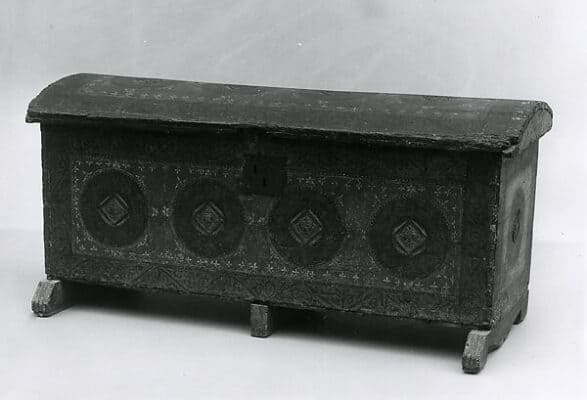

Renaissance Elegance: Italian Renaissance (14th-17th centuries) and Spanish Plateresque (late 15th-16th centuries)
The Renaissance marked a period of cultural rebirth, and in Italy, it manifested in the form of the Italian Renaissance. Thus is was characterized by symmetry, proportion, and classical motifs. Italian Renaissance furniture showcased a shift towards more refined and harmonious designs between the 14th and 17th centuries. Elaborate cabinets with inlaid patterns and intricately carved tables became popular during this era.
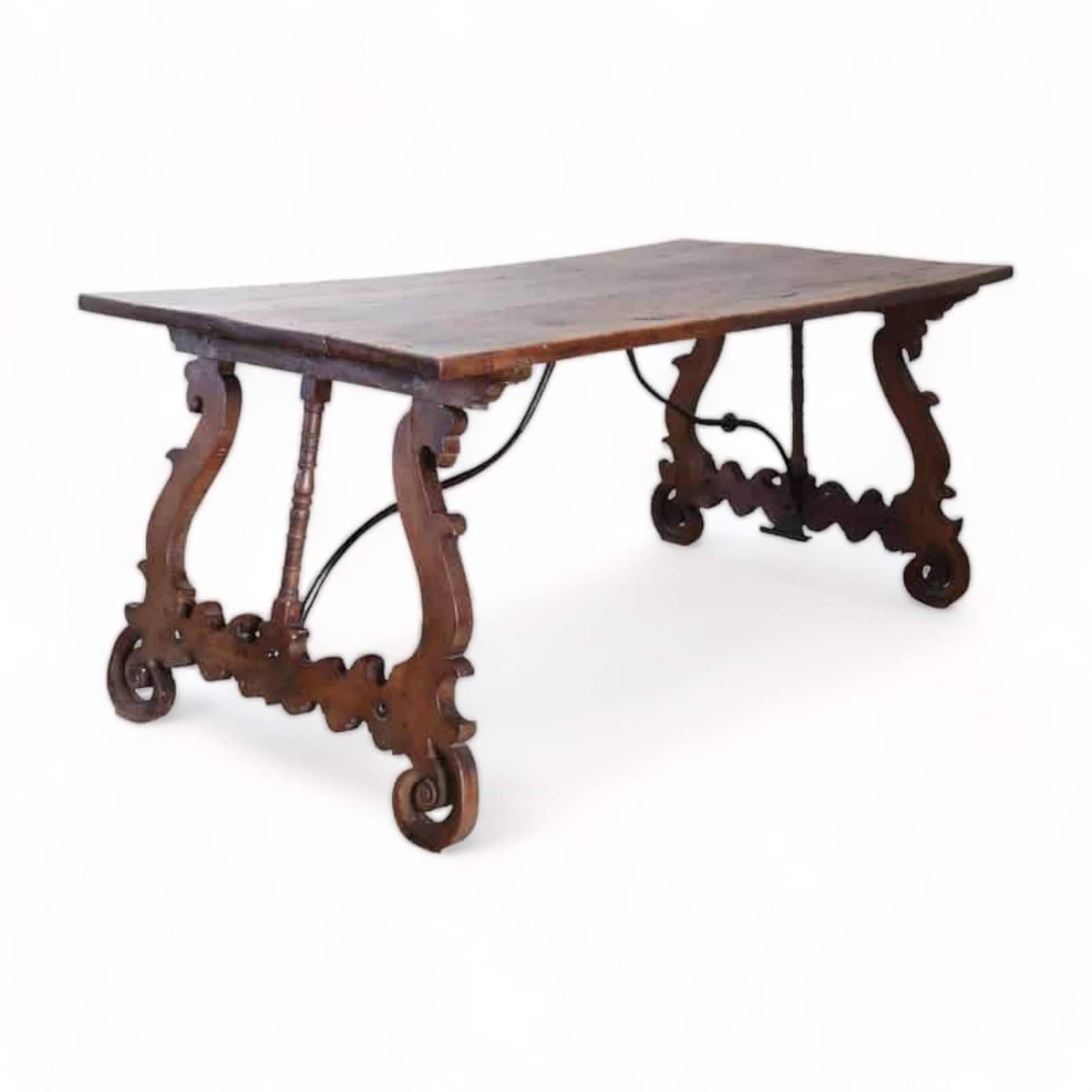

This Italian Renaissance table is made of solid cherry wood and features lyre legs. This table comes from the Tuscany region and embellished the entrance of an ancient residence of the 15th century.
In Spain, the Plateresque style emerged as a response to the Renaissance. Plateresque furniture exhibited intricate silversmith-like ornamentation, incorporating designs inspired by silverware. Chairs with high backs and carved detailing, reminiscent of silver filigree, were typical of this style, flourishing in the late 15th to 16th centuries. For example, this Leather, high back arm chair wih circle carving details.
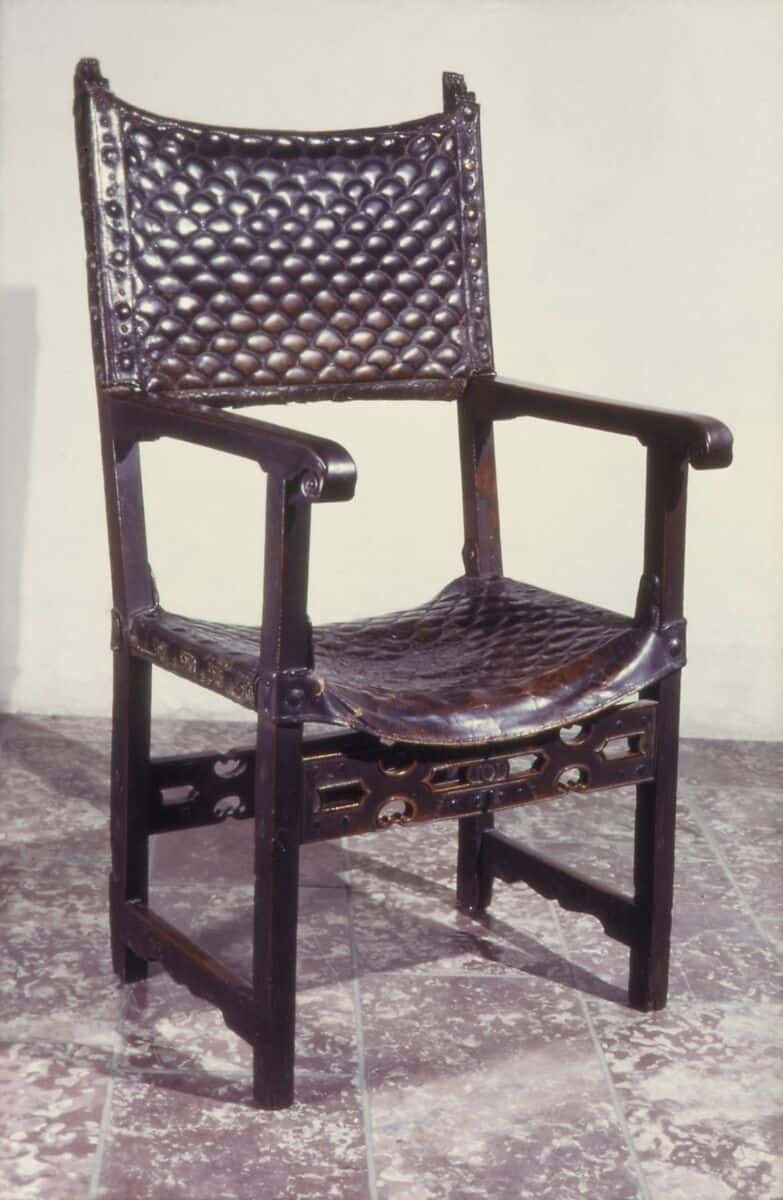

Baroque Opulence: Italian Baroque (17th-18th centuries) and Spanish Herrerian (late 16th-17th centuries)
The Baroque period brought opulence and grandeur to furniture design. In Italy, the Baroque style embraced dramatic shapes, rich colors, and ornate decorations between the 17th and 18th centuries. Baroque tables often featured elaborate carving, while chairs boasted exaggerated curves and gilded finishes. Italian Baroque furniture aimed to evoke a sense of theatricality and grandiosity.
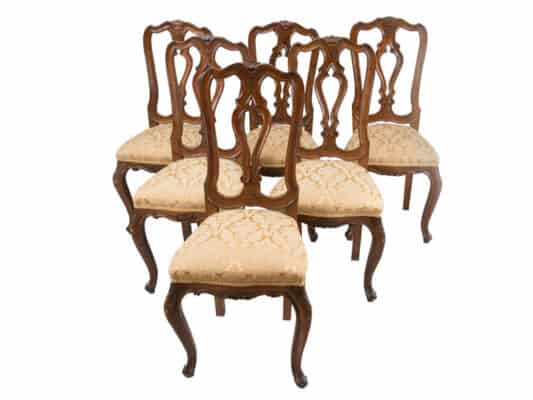

This set of six Italian Baroque chairs is available today on Styylish! Each chair showcases exquisite craftsmanship and intricate details characteristic of the Baroque period. Resting on two gracefully curved legs, these chairs feature a curved back seat adorned with openwork decorations depicting scrolls, carvings, and volutes.
Simultaneously, Spain witnessed the rise of the Herrerian style, named after the architect Juan de Herrera. Herrerian furniture was characterized by geometric shapes, straight lines, and a sense of austerity, flourishing in the late 16th to 17th centuries. Cabinets and coffee tables often had a solid, monumental appearance, reflecting the influence of classical architecture.
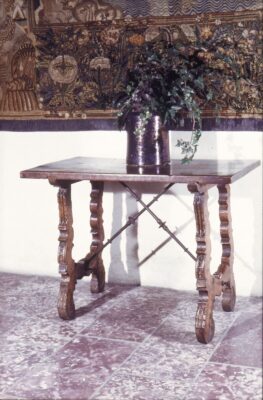

This walnut table perfectly represents the “solid, monumental appearance” that was common in he era. Its simplicity and subtle decorations make it a versatile piece that could blend with many interior design styles.
Rococo Flourishes: Italian Rococo (18th century) and Spanish Churrigueresque (late 17th-18th centuries)
The Rococo era introduced a departure from the grandeur of Baroque, favoring asymmetry, curves, and a more lighthearted aesthetic. Italian Rococo furniture featured elaborate carvings, gilded surfaces, and sinuous forms during the 18th century. Tables and cabinets became lighter in appearance, adorned with intricate scrollwork and floral motifs.
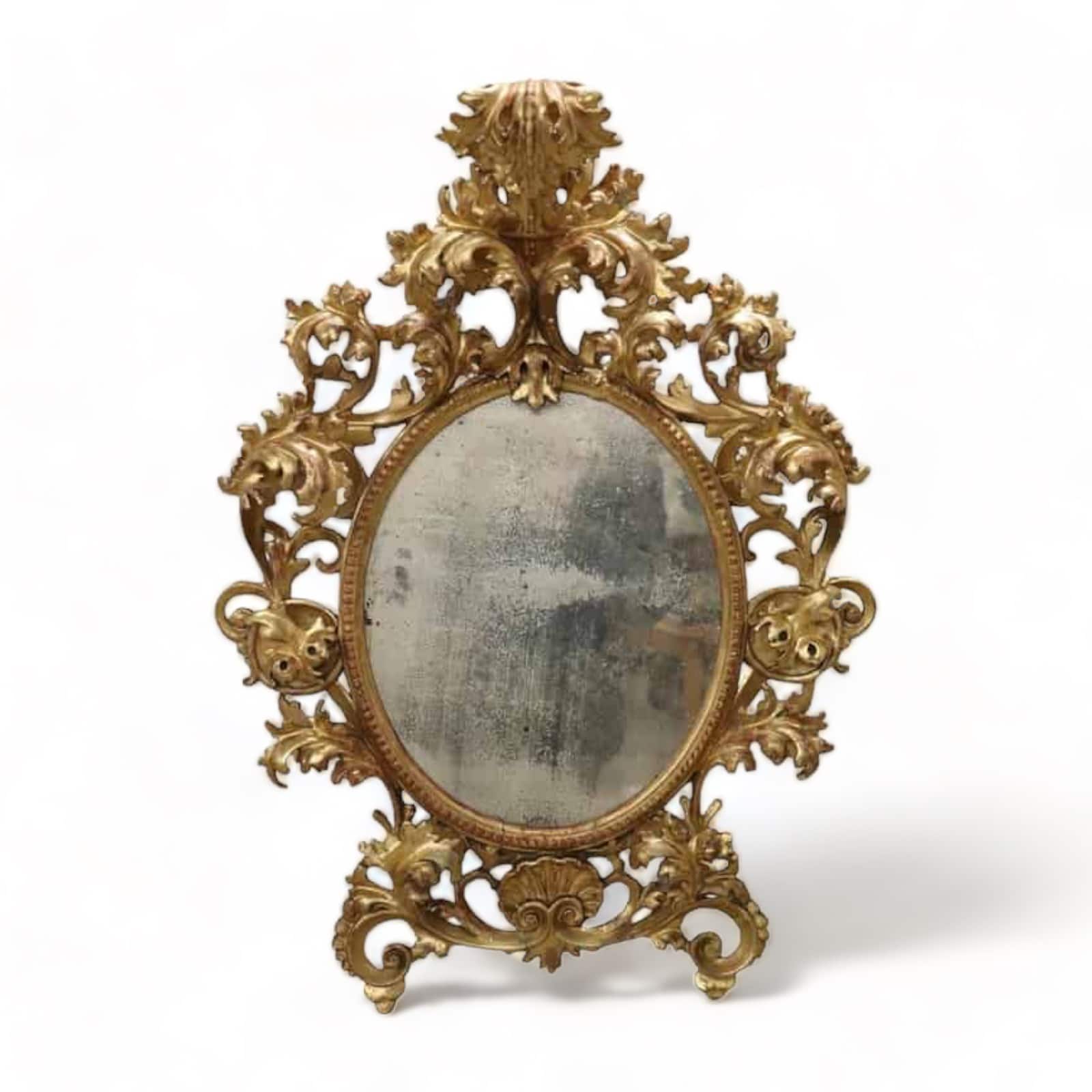

This carved gilded wood mirror dates back to 1750. It consists entirely of carved and gilded wood with gold leaf. Rich carving decoration with volutes and acanthus leaves curl up on the front of the mirror.
In Spain, the Churrigueresque style emerged as a highly ornamental and exuberant counterpart to the Rococo, flourishing in the late 17th to 18th centuries. Churrigueresque cabinets were characterized by elaborate carvings, often depicting scenes from religious or mythological themes. Chairs and couches embraced the whimsical curves and decorative excesses that defined this period.
This 18th Century cabinet showcases impressive wooden carvings, as well as Christian motifs throughout.
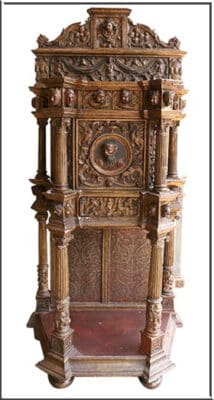

Neoclassical Simplicity: Italian Neoclassicism (late 18th-early 19th centuries) and Spanish Enlightenment (18th century)
The Neoclassical period witnessed a return to classical influences, emphasizing simplicity, symmetry, and order. Italian Neoclassical furniture drew inspiration from ancient Roman and Greek designs, featuring straight lines, geometric shapes, and restrained ornamentation, thriving in the late 18th to early 19th centuries. Further, tfables and chairs showcased a sense of refined elegance.
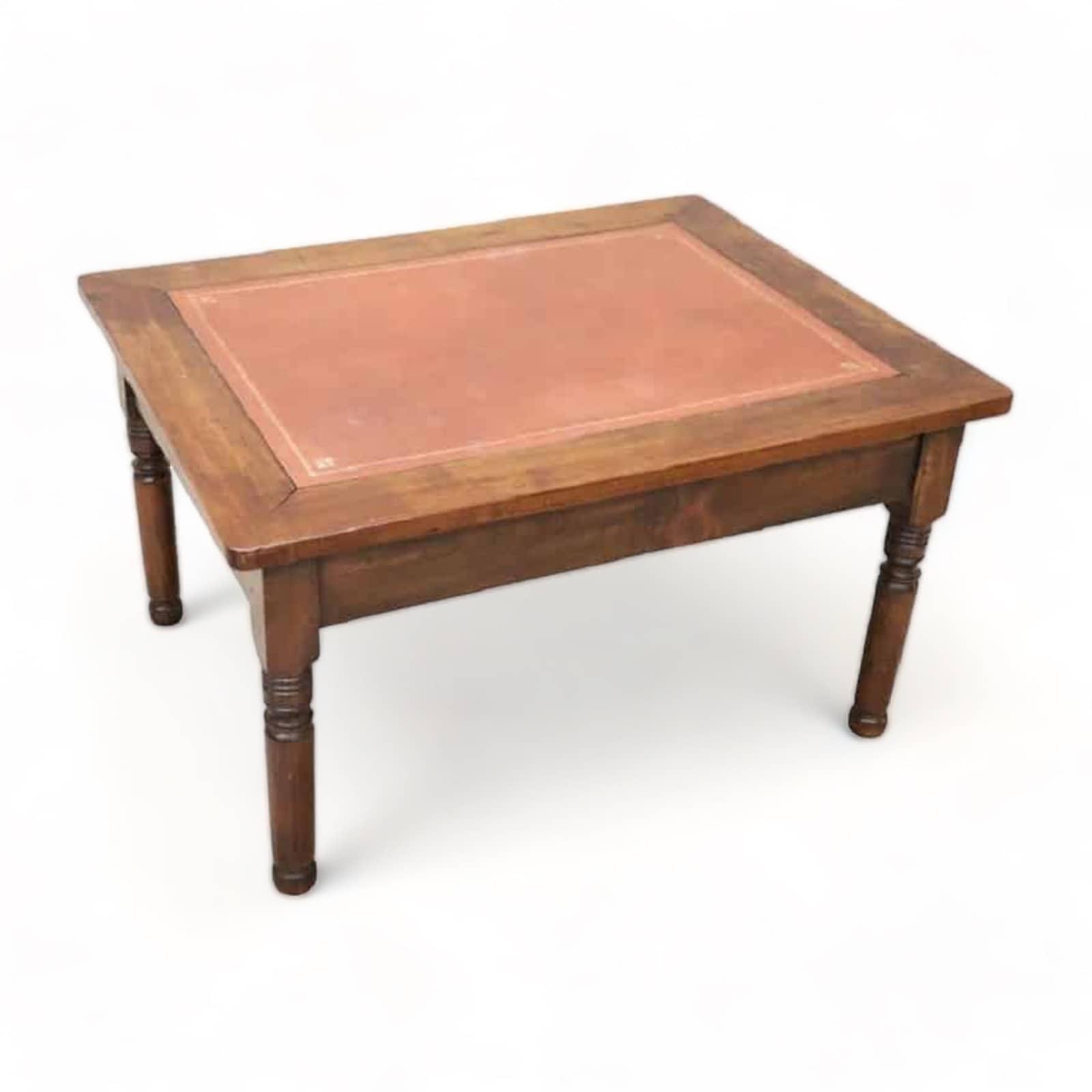

Available today on Syylish is this rare 19th century Italian coffee table made of cherry wood. This table is crafted from precious cherry wood and is characterized by a simple line with turned legs and a light brown imitation leather.
In Spain, the Enlightenment period inspired furniture that embodied rationality and simplicity during the 18th century. Spanish Enlightenment pieces often featured straight legs, clean lines, and a more reserved ornamentation compared to the previous extravagant styles.
19th Century Revival: Italian and Spanish Romanticism (19th century)
The 19th century brought about a revival of historical styles, with Romanticism influencing furniture design. Therefore, Italian furniture during this period embraced a nostalgic return to Renaissance and Baroque aesthetics, with an emphasis on craftsmanship and authenticity. Tables and cabinets often featured intricate marquetry and detailed carvings.
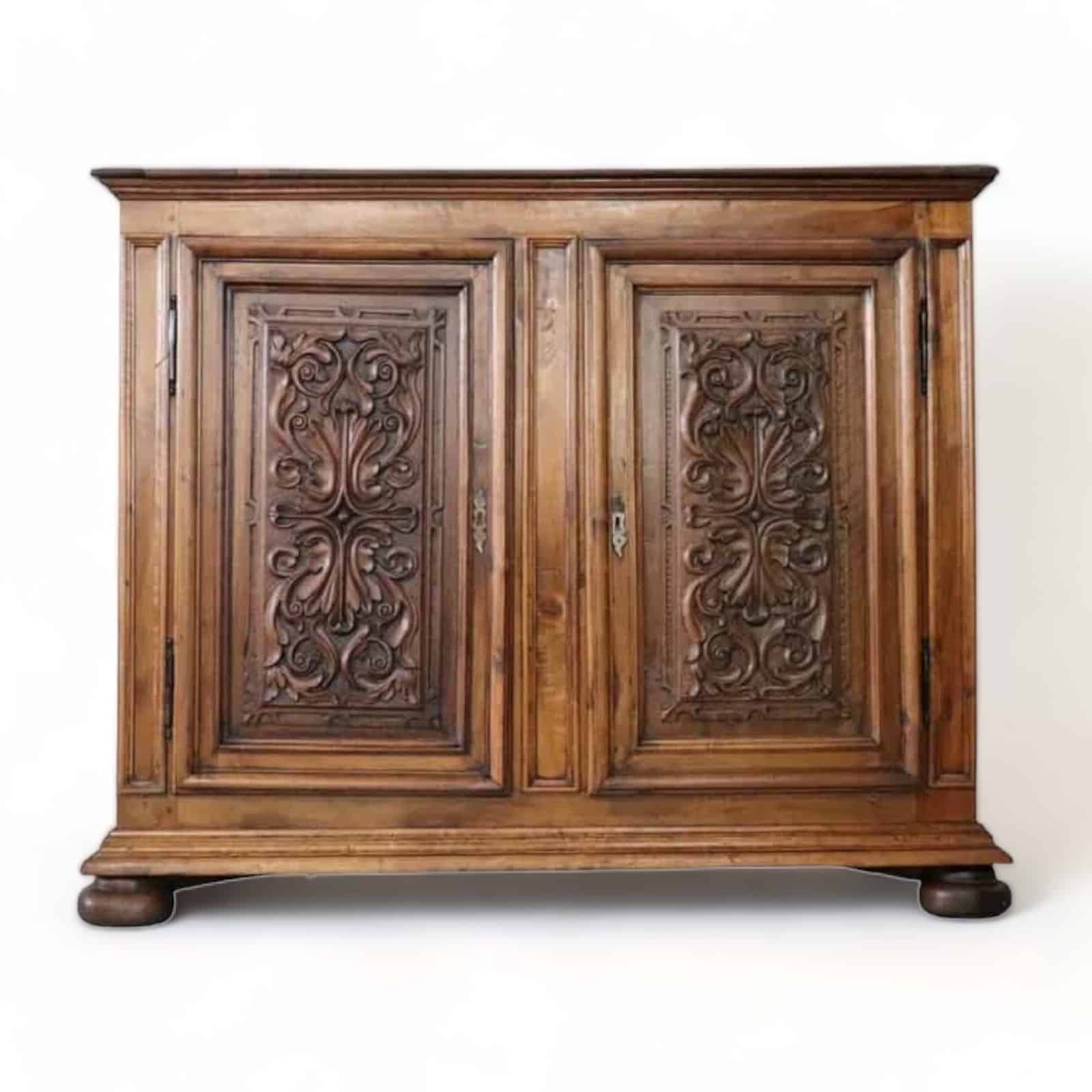

This 19th century Italian sideboard is made of solid walnut and has a sophisticated aged patina. The sideboard’s front doors showcase refined hand-carved wood decorations. These intricate decorations really make this sideboard stand out in a room.
On the contrary, in Spain, the Romantic era manifested in furniture styles that reflected national identity during the 19th century. Spanish furniture designers looked to historical forms, incorporating elements inspired by Moorish and Gothic traditions. Coffee tables and couches exhibited a blend of cultural influences, creating pieces that resonated with a sense of romantic nostalgia.
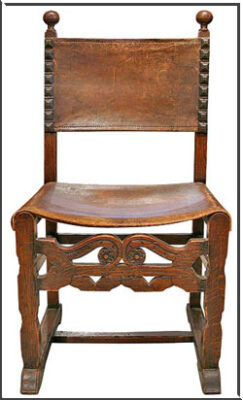

This leather chair harkens back to the earlier Spanish furniture styles, with its leather seat and back and simple, sturdy carvings.
History Lives on Through the Furniture of the Past
The furniture styles of Italian and Spanish antique furniture have traversed a fascinating journey through the ages, each period leaving its indelible mark on the design landscape. From the Gothic and Mozarabic marvels of the medieval period to the opulence of Baroque, the Rococo flourishes, and the simplicity of Neoclassicism, the evolution of these styles reflects the cultural and historical tapestry of Italy and Spain. Therefore, As we consider the intricate details of tables, chairs, cabinets, coffee tables, and couches from these regions, we witness the craftsmanship and artistry that continue to inspire and captivate admirers of antique furniture worldwide.


